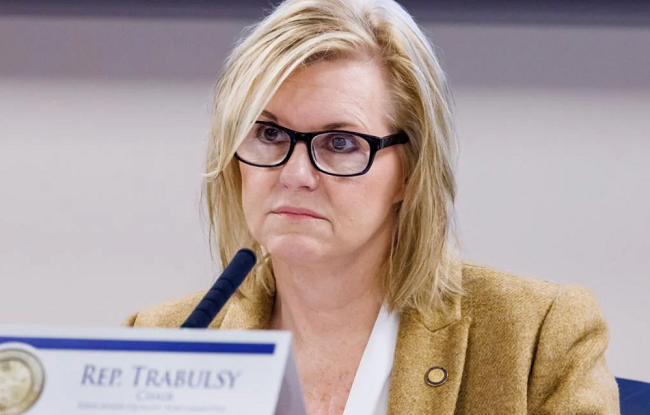By Ryan Dailey, The News Service of Florida
TALLAHASSEE — Florida lawmakers during the upcoming legislative session could look to address the problem of chronic absenteeism among public-school students.
Data collected by the Florida Department of Education showed that 20.9 percent of students in public schools, including students in adult education courses, missed 21 or more school days during the 2021-2022 academic year.
In measuring student attendance, the department looks at students who miss 21 or more days and students absent for 10 percent or more of the academic year. The 2021-2022 data showed that 32.3 percent of students, or more than 1 million students, were absent for 10 percent or more of the year.
Members of the House Education Quality Subcommittee this month heard from experts on chronic absenteeism as lawmakers prepare for the Jan. 9 start of the 2024 legislative session.
Chronic absenteeism can involve missing school for any reason, including excused and unexcused absences and suspensions.
“If you are chronically absent, it actually predicts higher suspension rates, lower achievement in middle school and a greater likelihood to drop out of high school,” said Hedy Chang, founder and executive director of the group Attendance Works, which works nationally on addressing school absenteeism issues.
High rates of absenteeism also can exacerbate problems such as lagging third-grade literacy skills — which is a key indicator of future academic success, according to the group.
Reasons for absenteeism can include a range of factors, from socioeconomic status to access to health care to older siblings being responsible for getting younger siblings to school.
Inika Williams, associate director of policy for Attendance Works, told the House panel that in Leon County, where she lives, “there are 13,000 children who are unable to make it to school regularly.”
“Even if you look at Leon County schools data, most of your Title I schools and most of your schools where there’s high concentrations of poverty have the highest chronic absenteeism rates,” Williams said.
Paul Burns, a chancellor with the Department of Education, said during the meeting that “the circumstances that a family and student may be facing are really individualized.”
Absenteeism rates have been rising nationwide, Attendance Works said on its website.
“Chronic absence appears to have doubled by the end of the 2021-22 school year. We estimate that it now affects nearly one out of three students (or 16 million vs. 8 million students in the 2018-19 school year),” the website said.
A comparison of data going back more than a decade, housed on the Florida Department of Health website, showed that the 20.9 percent of students missing 21 or more days during the 2021-2022 school year represented the highest rate of absenteeism in the state since at least 2010.
The Department of Health website said chronic absenteeism “is prevalent among all races and among students with disabilities.”
Data from the Department of Education showed that 31.4 percent of students designated chronically absent during the 2021-2022 year were white, 37.9 percent were Hispanic and 24.9 percent were Black.
Solving the problem could involve multi-faceted solutions.
Burns pointed to what are known as academic study teams, which include school administrators, counselors, teachers, social workers and psychologists, “collaboratively focusing” and helping address barriers that families face to improving attendance.
Chang said getting families involved is crucial in helping to improve attendance rates.
“We know that chronic absence is higher when kids have adverse early childhood experiences. When that happens, the key is not saying, ‘What’s wrong with you?’ But, ‘What happened, how can I help you?’ And to engage students and families in a problem-solving way so we can address the challenges that cause them to miss school in the first place,” Chang told the House panel.
House Education Quality Chairwoman Dana Trabulsy, R-Fort Pierce, said during the meeting that members “have not heard the last of chronic absenteeism in this committee.”
“If we are not helping children to realize that school is important, then how are they going to realize that work is important? How are they going to show up to work? These are our future leaders and we need to invest more in this important topic,” Trabulsy said.


I know a fair number of children who choose now to stay home with respiratory issues, when before this they would have attended: they don’t want to make anyone else sick. Why isn’t it possible for them to sign in via some app that lets them join their class remotely? (I think I’m seeing a whole lot more respiratory illness in the students I know too.)
I wonder what would happen if we started high school courses with a final test, allowing everyone who can pass at 70% or better (a “C”) to earn their credit without taking the course if they choose (presumably significant numbers who want better grades would stay to learn the rest of the stuff). Or maybe we reward 70% attendance monetarily, and 80% more money.
Another common reason is transportation (if the student isn’t sick, the one delivering them to school is). This issue would also be resolved if students could attend remotely.
We ought to be funding and transporting for the seventh period in every school, and including a tutoring option during it. (And we also ought to be fully funding the Khan Academy AITutoring intervention.
I have said this for MANY Years now. Think about this: I believe the problems started when the Computers started showing up in the Kids Class Rooms. Not every Kid has a Computer or Internet or Access to one. Because of that, they fall behind and because of that, they skip School. Remove all Computers out of K-8 Grades and go back to Text Books. All Home Work should be done using Text Books. Go back to like it was in the 70’s and 80’s. Shrink the Elementary Class Room to no more than 15 Kids.